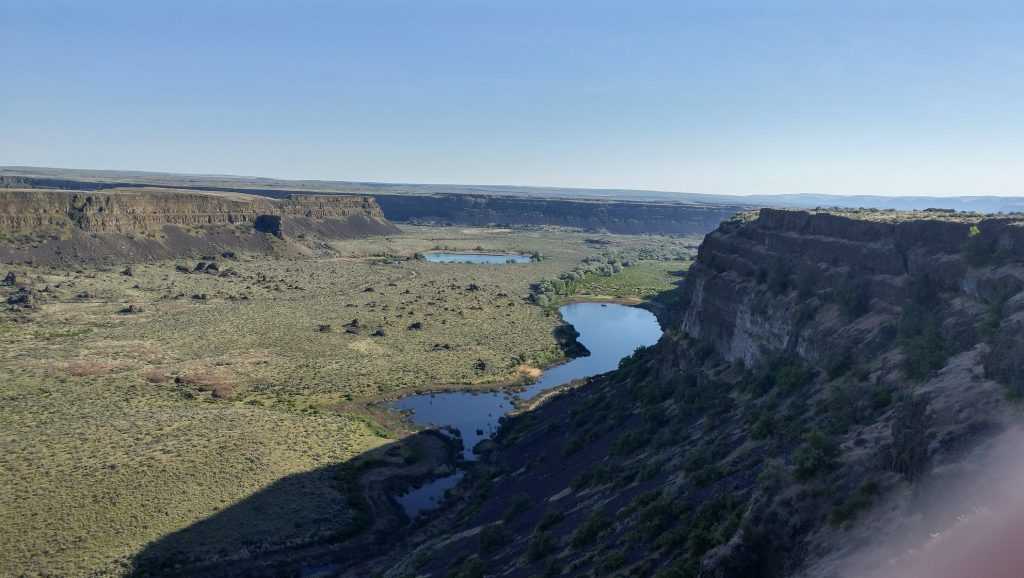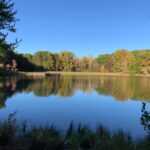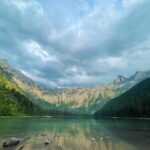Sun Lakes-Dry Falls State Park
Key Information
Contact Info
509-632-5583
Location
34875 Park Lake Rd NE, Coulee City, WA 99115, United States
Opening Hours
Open 24 hours
Fee
Unavailable
Introduction of Sun Lakes-Dry Falls State Park
Sun Lakes-Dry Falls State Park has an incredible and one-of-a-kind landscape. Views of cerulean lakes surrounded by towering cliffs and wide, stark stretches of high desert are available to visitors.
The 4,024-acre Sun Lakes-Dry Falls State Park is located three miles from Coulee City in north-central Washington, along the historic National Ice Age Floods Geologic Trail. The park was established between 1933 and 2002 through the purchase of 15 separate parcels of land and includes 12 freshwater lakes, including Dry Falls Lake, which has over 70,000 feet of shoreline.
Sun Lakes-Dry Falls State Park’s landscape was formed 13,000 years ago by massive flooding caused by the Ice Age and was originally the ancestral lands of the Coulee and Colville Indian Tribes. The Ice Age-sculpted landscape is breathtakingly beautiful, with deep gorges and blue-water lakes. Dry Falls, a 400-foot-high by 3.5-mile-wide cliff, was once a waterfall four times the size of Niagara Falls.
Sun Lakes-Dry Falls State Park offers a variety of activities, including boating, watersports, hiking, and wildlife viewing, as well as a nine-hole golf course. There are several 1938 Civilian Conservation Corps structures to explore, in addition to an interactive Visitor Center.
Sun Lakes-Dry Falls State Park’s weather is generally arid, with little moisture throughout the year. Temperatures can range from the mid-70s to the mid-90s in the summer to the mid-30s to the mid-50s in the winter. If you’re planning an RV road trip to Washington, this state park is a must-see because of the area’s captivating natural wonders.
Sun Lakes-Dry Falls State Park Camping
Sun Lake’s RV campground is located on the lake’s western shore. Even those in the most remote locations will be no more than 500 feet from the beach. Enjoy the shade provided by rows of stately, planted trees while taking in spectacular views of the water and surrounding cliffs.
The campground is divided into nine loops, each with nearly 200 campsites, including 41 full hookup sites (with water, 20- and 30-amp electric, and sewer connections) for RVs and trailers. One road connects the nine loops. A fire ring is provided at each campsite.
The longest sites are 65 feet long, though most are shorter (in the 40-50 foot range).If you’re travelling with a large rig or trailer, try to book well in advance to ensure a suitable spot. Several loops of the campground are designated for tent campers, small trailer or RV campers. All campsites are back-in, and most will require levelling.
There are flush toilets, showers, and freshwater drinking stations on each loop of the campground. During the winter, water access is limited; the campground’s spigots are turned off, but you can still get water at the entrance station. For RVs and trailers, there is a dump station near the entrance. Before parking, you should empty your holding tanks at the dump station.
Generators may be used daily from 8 a.m. to 9 p.m. Pets are welcome, but they must be kept on a six-foot leash at all times while in the campground. Reservations can be made online and are available from mid-April to mid-September. Bookings can be made up to a year in advance.

Sun Lakes-Dry Falls State Park Activities
Fishing
Sun Lakes-Dry Falls State Park’s fishing is excellent, with 12 freshwater lakes available for fishing. Deep Lake and Park Lake can be trolled from a motorboat. Other options for fishing include fishing from the shoreline or from a canoe, kayak, or belly boat. Rainbow trout are the most common species caught here, and they are stocked three times a year. The park’s waters also contain brown trout, smallmouth bass, perch, and the occasional walleye.
Check Washington State Rules and Regulations for catch bag and size limits. Also, before you cast your line, make sure you have a valid Washington state fishing
Hiking
Sun Lakes has an extensive network of hiking trails for those who want to stretch their legs and explore the entire park. This geologic wonderland is traversed by over 15 miles of footpaths. Families will enjoy the mile-long Boy Scout Trail, a gentle but lovely path with interpretive signage along the way.
For a longer hike, consider taking the five-mile loop trail to Umatilla Rock. The Caribou Trail, which leads to an overlook above Deep Lake, is another excellent hike within the park. There are also trails to several of the park’s other lakes. Check the Visitor Center for trail closures and conditions, as well as advice on which trails to take.
If you want more trails or a longer, more remote hike, visit one of the nearby National Forests. The Okanogan-Wenatchee National Forest is about an hour and a half to the west, straddling the Cascades. The rugged Colville National Forest is about two hours to the northeast. These forests both have hundreds of miles of hiking and backpacking trails.
Biking
Several park roads, including those leading to Deep Lake and Dry Lake, are bike-friendly. A ride on either of these routes will take you through fascinating landscapes that were formed during the Ice Age when melting waters flooded the area, forming the blue water lakes. You can also ride around Park Lake, cruise the roads within the campground, or go to Vic Meyer Lake. While biking on the park’s roads, keep an eye out for traffic.
Watersports
Sun Lakes offers a plethora of watersports opportunities. Swimming, boating, kayaking, canoeing, water skiing, and wakeboarding are all popular activities here. Park Lake has two boat ramps for motorised boats and Deep Lake has one boat ramp for motorised boats. Kayaking and canoeing are popular activities at all lakes, but particularly at Dry Falls Lake. Park Lake has a swimming beach where you can test your mettle in the chilly waters.
Sun Lakes-Dry Falls State Park Location
Sun Lakes-Dry Falls State Park can be reached via Washington Route 17, which runs north-south through central Washington. The area immediately surrounding the park is relatively flat, so there are no steep hills or winding roads to contend with. If you’re driving over the Cascades from the west, you’ll have to do some mountain driving (though you’ll be on well-maintained major roads).
The difficulty and conditions of the routes vary within the park. The road to Dry Falls Lake is the most difficult to navigate if you have a larger RV or trailer. If you are towing a trailer, you should consider unhitching before driving on this road, which has numerous curves and hairpin turns.The road to Deep Lake is a simpler drive with fewer turns and less undulating terrain. There is also a road that leads to the Park Lake boat ramps.
Most RVers and those towing trailers prefer to travel with a second car or by bike. The main campground is made up of seven loops that are linked by a narrow two-way road with curves for you to navigate. The road leading from the campground to Dry Falls Lake can become congested at times during the high season.
Winter weather hazards include icy roads and snow, as well as high winds (year-round). Check the weather and wind forecast ahead of time, especially if you’re driving a large vehicle!

Parking
The main RV campground’s spots are all back-in. If you have a medium or small RV or trailer, you should have no trouble finding a parking spot. Larger rigs may necessitate a little more patience. You’ll be within walking distance of the campground’s amenities (including water spigots, modern restrooms, and showers), as well as the amphitheatre and the Boy Scout trailhead, once you’ve parked.
Additional parking is available at a number of the park’s other lakes and trailheads. However, there isn’t always a lot of room for large vehicles, especially in the summer. Unhitch your trailer, take a personal vehicle, or ride your bike if possible.
Public Transport
Public Transport is not available




